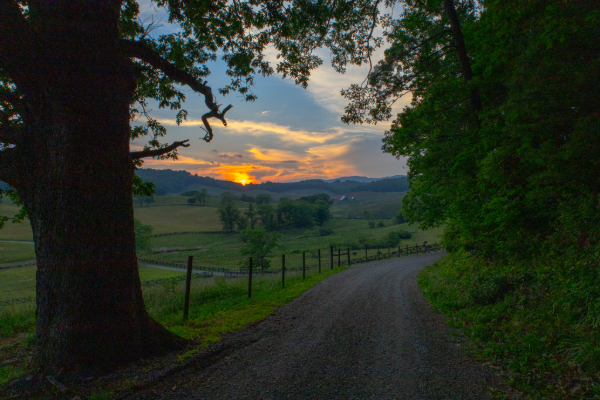Living Affordably in Appalachia
Nestled in the heart of some of the most stunning scenes and cherished traditions, Appalachia isn’t just about pretty views and age-old customs. It’s also a spot for folks—from young bucks to seasoned adventurers—who want to ditch the city rush and find a place where living costs won’t make your wallet cry.
Economic Opportunities in Appalachia
Appalachia’s not just sitting pretty; it’s a hub for fresh economic ideas to boost prosperity. The Appalachian Regional Commission (ARC) is all about smart investments for the future. They throw grants around like confetti and sponsor cool learning gigs, helping locals grab hold of new chances (ARC). The big idea? Build a chill, laid-back life with jobs that fit right in with those aiming for a slower pace.
There’s stuff like the READY Nonprofits that beef up local growth. They’re the go-to for anyone wanting to dive into community upgrades (ARC). They’ve got a focus not just on the economy but also on shaking off the grip of substance troubles, keeping the vibe healthy all around.
| Economic Initiative | Description |
|---|---|
| Area Development Program | Cash flow for growth magic. |
| Investments Supporting Partnerships in Recovery Ecosystems | Helping hands for shaking addiction. |
| Partnerships for Opportunity and Workforce and Economic Revitalization | Spiffing up the job scene through retooling. |
Budget-Friendly Initiatives
Keeping the bank account happy is big here. The ARC and local groups roll out the welcome mat with cheerful budget options. They’ve cooked up programs like the Appalachian Regional Initiative for Stronger Economies and sprinkle in grants to keep life easy on the pocket (ARC).
Many of these plans come packed with chances to volunteer, giving locals a chance to connect while having a blast. If you’re curious, look into local volunteer opportunities in Appalachia—they jazz up the community vibe and make life more rewarding. Diving into this can slash living costs and weave a tight-knit community feel.
For budget-smart adventurers, backpacking in the Appalachian Mountains offers a taste of the wild without the big spend. It’s all about soaking in the view while keeping fit and active.
When chilling involves a roof over your head, low-cost accommodation in Appalachia helps save your bucks for exploration instead of rent. Leaping into off-the-beaten-path destinations in Appalachia expands the horizons of exploration and stretches your dollar further.
With its array of economic paths and crafty, budget-friendly ideas, Appalachia pops up as a sweet spot for anyone looking to live well without spending big. The place showcases nature’s splendor and the warmth of a honey-sweet community.
Cost of Living in Appalachia, Virginia
Thinking about setting down roots in Appalachia, Virginia? Let’s explore why it might just be the wallet-friendly wonderland you’ve been dreaming about. Known for being one of the more affordable spots in the state, Appalachia offers a chance to live comfortably without breaking the bank.
Financial Overview
Peek into the financial side of Appalachia, Virginia, and you’ll find it’s all about budget smarts and sensible living. Curious about what makes it tick? Here’s a fast breakdown:
| Financial Aspect | What to Know |
|---|---|
| Median Income | Swings a bit based on local job opportunities |
| Debt-to-Income Ratio | Usually less stressy than big city figures |
| Cost of Living Index | Way below the Virginia average |
If you’re itching for more deets, check out AreaVibes.
What’s Gonna Cost Ya
Living the good life on a budget means knowing where the bucks go. In Appalachia, Virginia, several essentials keep the cost-of-living game strong:
- Housing: Forget sky-high rents—housing here is what your budget’s been dreaming of.
- Groceries: Stock up the pantry without emptying your wallet; prices are pretty sweet.
- Healthcare: Staying healthy doesn’t have to mean healthy bills.
- Transportation: Stepping out doesn’t have to come with a hefty price tag.
- Utilities: Lower utility bills keep those monthly figures looking nice and tidy.
| Expense Category | Average Monthly Spend |
|---|---|
| Housing | $700 |
| Groceries | $300 |
| Healthcare | $150 |
| Transportation | $120 |
| Utilities | $200 |
Sticking to these essentials can put you on top of your budget game. Need more insider info? Hit up AreaVibes.
Beyond Appalachia’s Borders
The affordable vibe doesn’t stop at Appalachia’s edge. Nearby towns offer even more bang for your buck, so why not broaden your horizons a little? You can snag more low-cost living options without straying too far from Appalachian charms.
For the adventurers and nature lovers, think about backpacking in the Appalachian Mountains or checking out hidden gems in Appalachia. These outdoor escapades add a dash of excitement to your thrifty lifestyle.
In Appalachia, you’ll find a sweet spot that’s easy on the budget but packed with the things you need to live well. It’s got the comfort of small-town life without the sticker shock of the big city, all wrapped up in the stunning scenery of Virginia.
ARC’s Impact on Budget-Friendly Living
The Appalachian Regional Commission (ARC) is all about making life better and, more importantly, affordable in Appalachia. Through a mix of programs, ARC focuses on boosting job prospects, improving healthcare, and offering training that sets folks up for success.
Economic Development Grants
ARC is like the fairy godmother for local businesses and industries. By dishing out grants, ARC helps businesses grow, creating jobs and, hopefully, lining pockets along the way. A prime example? They sent nearly $4.7 million to supercharge the energy sector, aiming to beef up the local economy.
| Grant Type | Purpose | Amount Awarded |
|---|---|---|
| Economic Development Grants | Support industry growth | $4.7 million |
These investments light the path for communities to grab opportunities and chase prosperity, a big win for anyone striving to keep their wallet happy in Appalachia.
Healthcare Access Initiatives
Who loves finding a good doc when they need one? ARC’s pushing hard to make healthcare not just a pipe dream but a reality in Appalachia. They’ve got this slick move where they recommend waivers for foreign doctors. Spot a shortage, drop a doctor in there, and – bam! – more people get access to the healthcare they deserve.
The ARC can swing it so doctors on J-1 Visas don’t have to go back home if they promise to practice where healthcare options are thinner than a stray dog’s belly. It’s a win-win, especially for those who call these communities home.
Job Training and Energy Projects
ARC is not stopping at job creation. They want folks job-ready, hence the READY Nonprofits program. It’s a crafty operation, guiding people toward mastering skills that pay the bills across a smattering of industries.
The energy sector, ARC’s other pet project, promises both economic uplift and new job training gigs. This two-for-one strategy aims to craft a savvy workforce while making life more budget-friendly with fresh employment opportunities.
By tapping into economic, healthcare, and job sectors, ARC’s giving Appalachia a serious facelift, making it a beacon for anyone longing to ditch city stress. For those itching to jump into community life, you’re in luck: there are ways to get your hands dirty through volunteer opportunities in Appalachia or even strap on a backpack for an adventure in the Appalachian Mountains. Plus, for a good night’s sleep, check out options for low-cost accommodation in Appalachia and uncover some hidden gems with off-the-beaten-path destinations in Appalachia. Embrace it all and soak up this vibrant region!
Addressing Poverty in Appalachia
Poverty in Appalachia is a tough nut to crack, casting a shadow over families and communities. Let’s take a look at some of the numbers, the money troubles folks in the area face, and the schooling roadblocks that keep this issue stuck in a rut.
Poverty Statistics
Getting your head around the stats in Appalachia helps paint a picture of what’s going on here. Between 2016 and 2022, roughly 14.7% of folks in the area were struggling below the poverty line, meaning a household of two adults and two kids was scraping by on less than $26,246 a year. Out in the sticks, this number jumped even higher, with some places seeing more than 20% of folks in the same boat (Americans Helping Americans).
| Year | Percentage Below Poverty Level |
|---|---|
| 2016 | 14.7% |
| 2017 | 14.9% |
| 2018 | 15.2% |
| 2019 | 14.5% |
| 2020 | 14.8% |
| 2021 | 15.1% |
| 2022 | 14.7% |
Economic Challenges and Solutions
The job scene in Appalachia is a part of the storyline behind the pervasive poverty here. Many folks are stuck in low-paying gigs, mostly tied to farming and coal mining, and this makes it hard to make ends meet (Americans Helping Americans).
Some projects aim to shake things up a bit, throwing a lifeline with job training, boosting skills, and switching gears to create more job choices. Encouraging local business and wooing new companies can slowly lift communities up, cutting down poverty numbers.
Educational Barriers and Impact
Schools in Appalachia face their own set of headaches that stir the poverty pot even more. Tight budgets and spotty internet access make it tough for kids to get the best education. Only about 15.6% of grown-ups in the area have a college degree, far off the national average of 29% (Americans Helping Americans). This leaves many folks reaching for secure, well-paying jobs that just aren’t there.
To tackle these barriers, local groups are pushing for better access to college and trade schools. By beefing up the school scene and giving young ones the tools they need, communities can help the next generation rise above poverty.
By getting a handle on these linked issues — poverty, money struggles, and school challenges — folks in Appalachia can work towards brighter days. If you want to get involved, check out plenty of volunteer gigs in Appalachia to lend a hand with community efforts.







